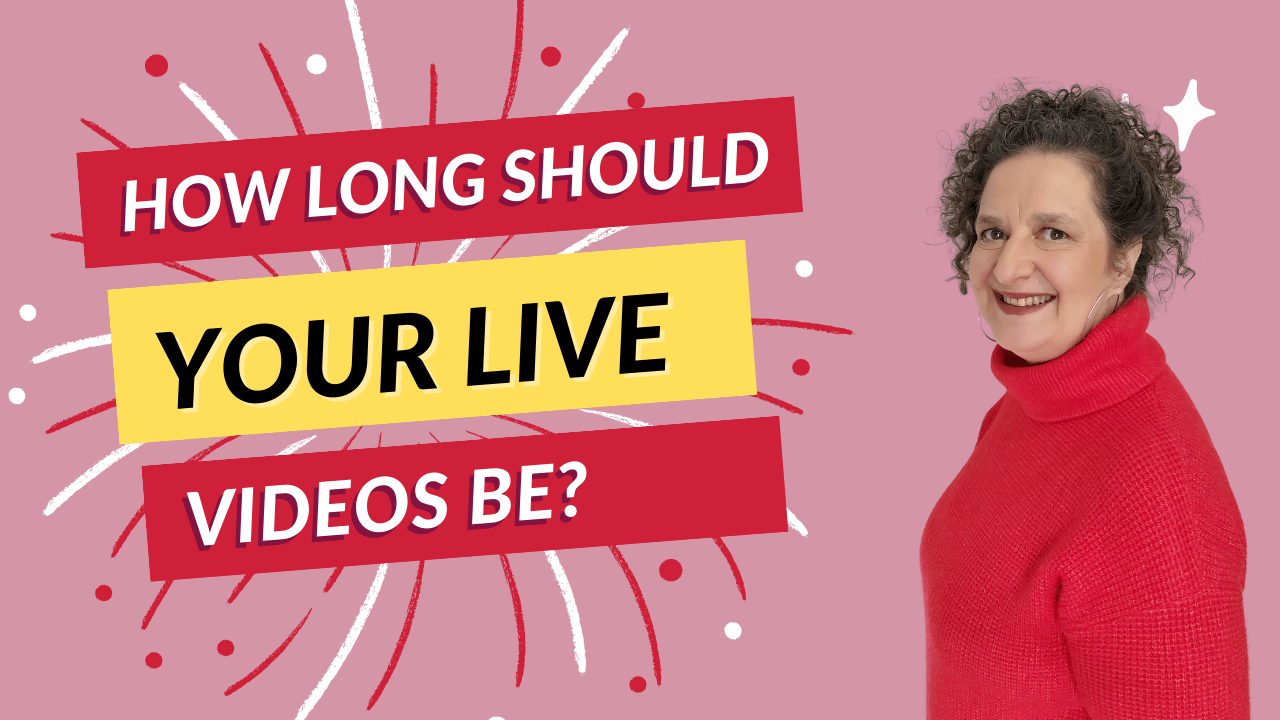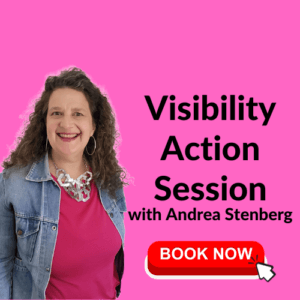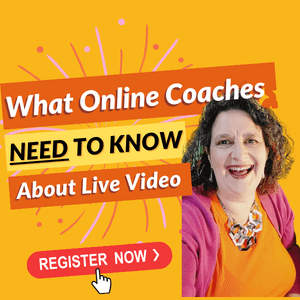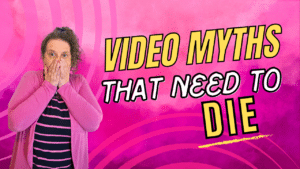Live videos are a great way to increase your visibility while building the know, like & trust factor with your audience. But how long should these videos be?
I get asked that question every time I speak to coaches, course creators and any groups of entrepreneurs thinking about making videos.
The answer is “it depends”. There is no one-size-fits-all answer for how long your live videos should be. I know people who regularly go live for an hour or more and their audience stays to the end. I know others who are getting amazing results with five minute videos. There are several factors to consider when figuring out what’s the best option for you.
Your Audience Matters
Your audience is an important factor in deciding how long to make your videos. Why they’re watching plus their expectations makes a difference.
If they’re watching your video on their phone to kill time while waiting for an appointment or for the coffee to finish brewing, your videos should be shorter so you finish before the coffee does. Short, engaging videos that get to the point quickly will keep your viewers happy.

Additionally, if these “killing time” viewers watch until the end, it signals the algorithm that your video was interesting and you may get pushed to more viewers. However, if the majority of viewers leave before the end, the algorithm will be signaled that your video isn’t of interest and you’ll be shown to fewer people.
If they are watching your videos at their desk because they want to learn what you’re teaching, the video can be longer. It still needs to be interesting and engaging but you can plan to share more content if you know your viewers are they because they want to be.
The Content
The content of your video is really what should dictate how long your video should be. If you’re teaching something, make your video as long as it needs to be for you to fully explain the concept, and no longer. If you’re telling a story, when the story ends, sign off from your livestream. Don’t add fluff or filler to make your video reach an arbitrary goal length if your content creates a shorter video.
This is why it’s important to plan out your content in advance. You don’t necessarily need to write out an entire script but plan out your main points, stories and examples so you can share the information in a concise manner. You don’t want to have lots of wasted time in your video where you’re trying to think about what to say next or repeating yourself.
Your Skill As A Presenter

How good you are at speaking to the camera also plays a big part in how long your video should be.
If you’re a dynamic, entertaining, inspiring speaker who can hold your audience’s attention you can make longer videos. If you’re not as experienced or confident on camera (yet) then be kind to yourself and make your videos shorter.
That’s what I recommend in The Camera Shy Entrepreneur course. Keep your early videos between 5 and 15 minutes and keep the structure simple.
Longer videos will be more stressful and you’ll have a harder time confidently getting through the content. This stress and lack of confidence will some through in your videos and make them less engaging for the viewers.
One of my favourite types of videos for beginners is the “3 Ways to Do X” video. Make your live video 5 parts.
- Part 1 – introduce the video with “Today I’m going to share 3 Ways to Do X
- Part 2 – share the first way
- Part 3 – share the second way
- Part 4 – share the third way
- Part 5 – recap and call to action (what you want them to do next)
When you plan this type of video, for each of the ways to do X, have a story, example or statistic that goes along with each point.
Having Guests
Bringing guests onto your live videos has a number of benefits. You don’t have to do all the work, you have another person to be speaking on camera. It’s also makes the video more conversational. Let’s face it, speaking to the camera is an unnatural thing to do. Having someone else with you feels more normal.

When you bring on a guest your video will likely longer than if you were talking about the same topic on your own because of the back and forth nature of having two people on camera.
Having a guest on your live video doesn’t mean you can get away with not planning. It may take longer to plan this type of video.
I recommend getting on a call with your guest ahead of time and plan your video together. If it’s an interview, ask your guest to provide questions to ask or write your own and share them ahead of time.
If you and your guest are having a conversation you should still plan the content. Have an outline of the topics you will cover. If your guest is not experienced at being on camera, ask them to prepare a story or example for each of the topics you’ll be discussing.
When you go live with your guest, take charge and be the host. Introduce the topic and your guest. During the conversation, move things along to the next topic if the conversation starts to flag. Also, be prepared to step in and cut off the guest if they start going off on a tangent that doesn’t fit the topic or your audience. But don’t be afraid to “go off script” if the conversation is really interesting.
Final thoughts
Once you are more experienced with going live and you’re starting to feel more confident, try experimenting with different length of live videos. See what feels comfortable for you. Also, notice the analytics the social media platform that you’re going live on. What length of videos get the most views, the most engagement and the most people taking action?
Ultimately it’s knowing what length of video gets you the best results that is the most important factor. See what works best for your business and audience then do more of that.






